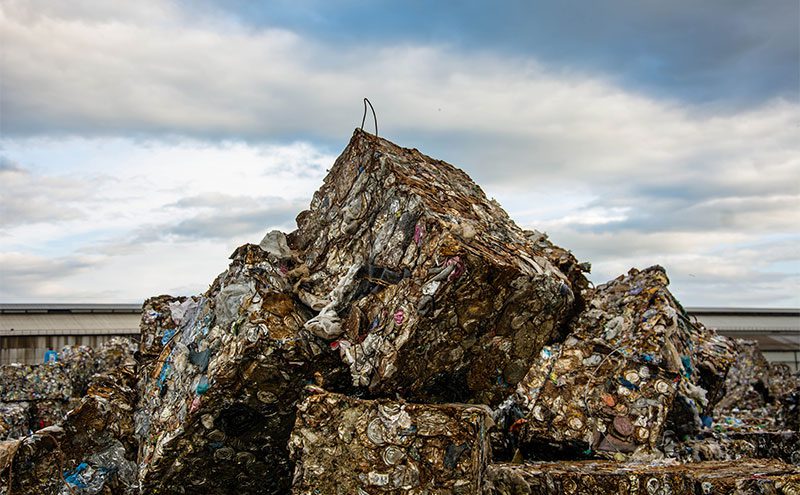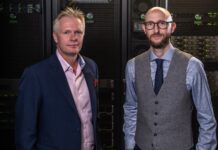
Reaching Net Zero operations by 2050 will require huge changes in industrial practices – such as how we use energy and source raw materials – but despite all the challenges, the target is achievable writes Rob Jenkinson.
Climate change is no longer a theoretical concept: it poses an existential threat to us all. The manufacturing sector is a major generator of the emissions that cause rising temperatures. As such, it has an ethical imperative to adopt practices that lead to carbon neutrality.
This is a tough challenge. After all, manufacturers are typically energy-intensive businesses. Cutting their carbon emissions to zero – as many have pledged – might appear to be an impossible task. How can manufacturers – which have complex global supply chains and use large amounts of energy and raw materials – begin to move towards such targets? The truth is, we have already started – with several elements already in place or under development to make them possible.
SKF’s global emissions are around 1.8 million tonnes/year of carbon dioxide equivalent. This includes emissions from our own operations, plus all upstream supply chain and downstream logistics. While this is a lot of carbon, it is much lower than it was in 2001 – when we started monitoring our emissions. This reduction has gone hand in hand with increased efficiency and profits – proving that improved business performance can be achieved at the same time as decarbonisation.
In common with many other manufacturers, SKF has set itself two clear goals. All our factories will be Net Zero by 2030. In addition, we will have a Net Zero supply chain by 2050. We consider these to be challenging – but achievable goals.
New approach
There is no magic solution, no single technology that can be applied. In many cases, it requires a whole new approach. By developing and deploying a range of measures – including greater energy efficiency, avoiding waste and electrifying processes that currently use gas – it can be done. Other measures include: greater use of renewable energy; optimising methods of transport; and encouraging emerging technologies in areas such as green steel production.
Many of our customers – such as those in the automotive sector – increasingly demand components and materials with much lower embodied carbon. One day, they will expect these products to be completely carbon neutral. This demand helps to create significant opportunity all along the value chain.
Raw materials
Decarbonising raw materials will be a key sustainability problem for manufacturing companies. For SKF, steel forms the basis of most our products. Historically, our main concerns with steel were its price, availability, technical features and quality. Now we must also consider its embodied carbon – the amount of CO2e it takes to produce a ton of steel.
Although we have no direct control over embodied carbon, we do have an influence. We want to help the steel industry in its decarbonisation efforts by encouraging it to accelerate this transformation. Steel Zero – of which we are a member – is a group of steel users that advocates for the steelmaking process to be decarbonised. We want the steel industry, governments and global investors to realise there is a clear demand for ‘low embodied carbon’ steel – to justify the necessary investments needed to drive decarbonisation. Members have publicly committed to procure 100% net-zero steel by 2050.
Many steelmakers are already reducing CO2 emissions and are committed to achieving more. In July 2022 for example, Tata Steel announced that it wanted to decarbonise its UK operations – but would need huge financial help from government to do this.
A promising route to decarbonising ore-based production of steel is to use hydrogen-based direct reduction. Here, hydrogen replaces fossil fuels used in conventional reduction processes. If ‘Green Hydrogen’ (produced using renewable energy) is used, it is possible to virtually eliminate carbon emissions, compared to the conventional method.
SKF is part of a consortium of Nordic businesses and organisations working towards this. As part of Luleå University of Technology’s CH2ESS initiative, we will take part in, and fund, research into using hydrogen in industrial processes and energy systems. This should accelerate the development of fossil-free bearing steel. Ovako, a long-term supplier, has run full-scale trials using hydrogen as a heat source in its steel production process. Combined with other innovations, it is making carbon-neutral steel a viable option.

Scrap rates
One way to cut carbon impact is to use scrap steel in products. In simple terms, steel can be derived from scrap or iron ore (virgin steel) – or a mix of the two. Production from scrap is far less energy- and carbon-intensive than ore-based production. Scrap production is already widely available – while decarbonising ore-based steel production will require a major (trillion-dollar) investment and take decades to complete.
Based on this, it seems SKF, and other manufacturers, could speed up decarbonisation by only sourcing scrap-based steel. However, demand for steel far exceeds available scrap levels – which is around 30% of global demand.
If manufacturers sourced only scrap-based steel, the total need for other users to source ore-based steel would remain broadly similar – as would the overall quantity of greenhouse gases released into the atmosphere. For this reason, it is vital to find ways to measure (and motivate) the carbon efficiency of steel production which address this challenge and factor in the impact of the percentage of scrap used in products.
Factory output
Manufacturers have direct control over carbon emissions in their own factories. SKF first reported its own emissions in 2001 – and has steadily reduced them since then. There are two main elements to our strategy: driving energy efficiently; and switching to renewable sources.
We drive energy efficiency in our factories by applying the ISO 50001 energy management standard and by implementing improvement targets. We now use less energy per year than we did in 2006; in that time, our business has grown by around 60%.
As well as energy efficiency, we also drive material efficiency. By applying lean manufacturing, we look to eliminate all types of waste from our operations. We find that waste reduction almost always reduces carbon emissions.
However, we will never reach Net Zero on efficiency alone. We must replace fossil-based energy with renewable alternatives. Electricity accounts for 75% of our total energy use: in 2021, about 50% of this we sourced from renewable sources. To reach Net Zero, we must keep increasing our use of renewable energy until we get to 100%.
One effective approach – which also reduces energy costs and price volatility – is through the application of Power Purchase Agreements. These work by promising to buy a certain amount of electricity from a proposed wind turbine installation, for instance. Committing in advance, for 10-15 years, gives the project investor a secure revenue to help make the business case for the wind farm, in this case. In exchange, SKF secures a source of renewable electricity at a fixed or discounted price – with no price fluctuations.
As an example, SKF’s Indian factories in Bangalore and Mysore have made solar power purchase agreements and now use more than 80% renewable energy. Some is generated on site and some at off-site solar farms. This has cut energy costs – and reduced annual CO2 emissions by around 15,000 tonnes.
Another challenge is to find alternatives to the fossil fuels used directly in operations. At SKF, this is mainly natural gas used for building and process heating. Our plant in Tudela, Spain became carbon neutral by 2021 without using carbon offsetting. This meant finding an alternative to the natural gas that we used to heat the building – generating around 600 tonnes/year of CO2e. This was achieved using an electrically driven heat pump, which is used for heating in winter and cooling in summer.
Delivery woes
Transporting products and raw materials around the world is another key contributor to carbon emissions. Decarbonising logistics will help us to meet our 2050 target for a Net Zero supply chain.
Rail and sea are the most sustainable forms of shipping – while air is the least sustainable. One alarming statistic shows the importance of avoiding air freight: while it accounts for around 1% of our logistics volume, it contributes around half its emissions. In fact, SKF sees air freighting on the same level as a quality defect – something that should never happen. Air freighting is there as a last resort, for when something in the supply chain goes wrong. While there will always be emergency situations, where air freight cannot be avoided, improving communication and planning along the value chain can help to minimise it.
Another important factor in logistics is regionalisation. The days of making products centrally – and shipping them all around the world – are disappearing. Instead, we are quickly moving towards a more localised approach with our factories closer to our customers and our suppliers closer to our factories. By applying this kind of thinking, we expect to cut more than one-third of our emissions from logistics operations by 2030 (compared to 2019).
Lifecycle measurement
A carbon footprint is typically measured for a product’s entire lifecycle, from when it is created to when it is scrapped (so-called ‘cradle to grave’). However, SKF often measures the footprint of its products with a narrower scope – from cradle to gate (meaning to the point of delivery to the customer – excluding the use phase).
Emissions from the use phase (when our product is running in a customer’s application) can be calculated on a product or system level. For instance, we can calculate frictional losses within a bearing arrangement. When we know the energy source, we can convert this into a greenhouse gas impact. However, calculating aggregated use-phase emissions on a corporate level in a meaningful way, for components that are applied across a multitude of globalised industries, is extremely challenging.
This is because of the nature of SKF’s product offering – and our position in the value chain. The same SKF product could be applied in a variety of different applications. Each has potentially very different energy use and associated greenhouse gas (GHG) impacts – defined by factors such as load, speed and operating cycle, as well as the energy source applied in the machine or system. In addition, a significant portion of SKF products is sold via distributors, making it impossible to know exactly where the product is applied.
For this reason, we provide customers with useful calculations of the GHG emissions associated with our products when running in their specific applications and systems. This helps them optimise these systems for friction, weight, and life – which reduces their operational impact (scope 1 and 2) or the impact of use from their customers (scope 3). One recent example of this was seen when we launched SKF’s CO2 dashboard, a free tool that estimates the CO2 emissions of single rolling bearings. It estimates emissions related to the production phase, and from frictional power losses and grease consumption when in operation.
Business issues
In the lead-up to COP27 the focus on sustainability in business will sharpen again.
SKF’s efforts to measure and reduce carbon emissions over the years means that our products are relatively low in embedded carbon. We are winning business off the back of this. We find that many of our customers are as committed to Net Zero as we are. They are actively seeking more sustainable products, such as low-embodied carbon bearings, or products, services and solutions that help them cut their emissions.
Another critical factor – often ignored – is the so-called ‘war for talent’. SKF competes with many other organisations to attract the most talented young people into our company. If we cannot show our commitment to sustainability, we stand little chance of recruiting and retaining next generation talent that takes climate change very seriously. If we can, it helps to keep them both engaged and committed.
Climate change is a challenge unlike any other we have faced. Businesses must address it in meaningful and effective ways if they are address the related risks and opportunities. It is such a massive issue that they must do this to remain relevant, to grow and progress.






